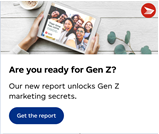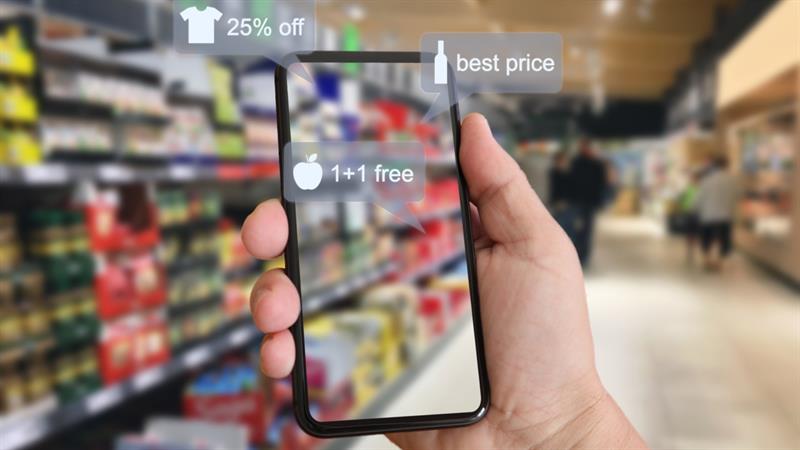4 ways to unlock the power of your martech tools and connect with B2B customers
COVID-19 has permanently changed how we work, live and play.
Social dynamics are evolving. Whereas we once asked, “Why are we doing this online?”, we are now asking, “Why are we doing this in person?". Virtual communication is quickly becoming the new norm for our personal and professional lives.
This physical distance creates a barrier for marketers. Especially for B2B marketers where much of the customer connection has traditionally been created at live conferences, events, and meetings.
We must reorient our relationships with our customers to prepare for the new economy. This starts with ratcheting up our use of marketing technology to deliver more personalized and relevant experiences.
By now, most marketing teams have realized that simply procuring a marketing automation tool doesn’t solve their problems. A tool that isn’t configured properly or applied in the right way is simply a waste of budget. A client once told me, “Andrew, I feel like we’ve bought a Ferrari, but we’re stuck in the first gear.”
Follow these 4 steps to shift gears and unleash the power of your marketing automation tools.
1. Map your customer stakeholders.
Go back to basics to ensure you’ve got the right foundation. There are 15 decision-makers on average when it comes to B2B purchasing decisions. Organizations must understand these different perspectives and expectations.
Organizations that are most successful with marketing automation deployments have invested in research to fully understand each stakeholder’s involvement in the buying journey, and they use these insights to formulate customer journeys that are optimized for each role.
For example, one of our global technology clients maintains a “persona profile” for each target stakeholder. These living documents detail job function, role in buying scenario, top decision drivers, and digital communities they’re a part of to guide acquisition and nurture strategies. This centre of excellence asset is shared across product marketing teams and agency partners to ensure these insights are consistently applied across all marketing campaigns. No surprise, this insight-driven approach has led to double-digit gains in campaign performance.
“Know your customer” may be common knowledge, but it isn’t common practice.
2. Sit down with IT to understand where your data sits.
Just because your organization is collecting data, it doesn’t mean it’s usable. IBM estimates that roughly 90% of data generated across sensors and analog-to-digital conversions never gets used.
Just like oil, data needs to be refined in order to become valuable. Sit down with your IT leadership to help them understand which pools of data need to be processed and connected to provide a unified view of the customer.
For one of our financial services clients, an open conversation with IT led to a data restructure that would forever change how they do marketing.
From disparate spreadsheets to SQL databases, they lacked a single view of their institutional investors. Marketing decisions weren’t grounded in data, they were based on gut feels and human biases. To close the gap, they procured a customer data platform (CDP), which streamlined all data into centralized client profiles.
With a single source of truth, they were able to gain a holistic view of each client, predict churn rates, measure customer lifetime value, calculate engagement scores and most importantly, proactively engage clients.
Step 2 may sound like more of a setback than an actionable strategy. But sometimes you need to take two steps back to take ten steps forward. Without a clean dataset, the AI capabilities that come with your “Ferrari” will never be used.
3. Leverage sales to help you think beyond campaigns to customer outcomes.
The point of marketing automation is to nurture customers and prime them for conversion. As sales plays an integral role in that process, incorporating them into the planning and execution is mission critical.
Sales teams are your boots on the ground. They’re closest to customers, and therefore, have a deeper understanding of their needs. This intel is crucial in designing relevant and engaging customer journeys.
For one of our global software clients, their sales teams play a key role in the content process from identifying relevant industry partners for co-authorship to ensuring content relevance for priority accounts to recommending the right calls to action within marketing automation journeys. This collaboration success has led to cross-functional “pods” that place sales and marketing stakeholders within a single operating unit to achieve customer outcomes.
Successful marketing automation will require ongoing investment. However, securing budget in this climate is increasingly difficult. That’s why it’s more important than ever to tie your marketing automation journeys to strategic sales motions such as executive briefings, immersion experiences, and trials to secure the required resources.
4. Start developing more content… a lot of it.
I’ve got a unique vantage point, being deeply involved in marketing automation deployments and optimizations for global organizations. From my perspective, where 90% of organizations fall down is a lack of content. Let me clarify, “good content”.
Today, we must truly be customer centric and deliver on their expectations. We can’t lure customers in using the premise of “thought leadership” only to provide sales collateral. That’s a quick way to end the journey. When evaluating your content, you should ask yourself two questions, “Is my content customized to the stakeholder?” and “Will they be glad they received it?”
For one of our technology device manufacturer clients, they recognized that the content they’ve been receiving from “corp” is simply not good enough to deliver on customer expectations. Rather than commissioning proprietary studies, they explored licensing of existing reports from staple research firms such as Forrester, IDC, and Gartner. It was a significantly less expensive method of procuring valuable content which offered the brand name without the price tag.
Content should be looked at as the fuel for your customer journeys. In fact, several IDG studies have confirmed that business decision-makers expect to receive multiple pieces of valuable content within a drip journey before a sales-oriented outreach. Your customers are hungry for real insights. Use this opportunity to differentiate your brand voice and create new value for your customers.
Moments of crisis present moments of opportunity.
The operating climate is tough. Customers are hesitant to make big investments. CFO’s are reluctant to approve marketing budget requests. CMO’s are challenged to prioritize investable marketing campaigns that drive immediate impact.
But, moments of crisis present moments of opportunity. In the past four months, we’ve advanced four years in our personal and professional digital transformation journeys. I know for many marketers this is the motivation they needed to deepen their knowledge of marketing technology tools and use cases. For those who are starting or scaling their martech journey, a grounding reminder that there’s no magical tool that makes the ecosystem work. It requires a deep understanding of customer needs, an invested IT team to connect your data landscape, a collaborative sales team to co-pilot your journey, and a strategic focus on high quality content.
Now the question that I get asked most often – what’s next? If customer engagement continues to digitally transform, where does that leave an industry of marketing professionals who aren’t “technologists"? In short, at a huge advantage. Contrary to what you might think, the future of marketing will not be driven by software vendors and technical developers. It will be defined by strategic marketing professionals who can use “No Code” and “Low Code” platforms to create entirely new technology solutions that will transform the marketing operation.
The “citizen developer” revolution is well underway and presents a significant opportunity for every marketer, regardless of technical acumen. Case in point, our agency is using the PowerApps platform to create our own proprietary solutions that streamline campaign reporting, guide account planning, and automate industry research. All without writing a single line of code. Today, we have more power than any generation that came before us. The question is, how will you use it?







































